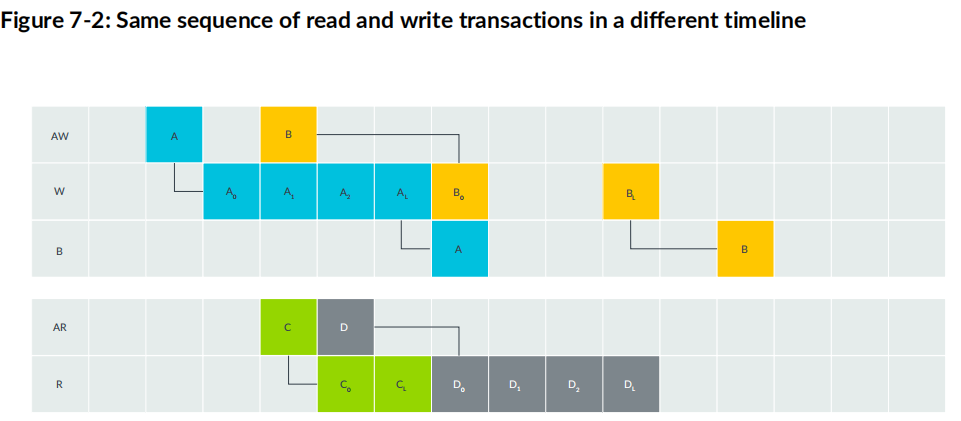The following diagram shows the same sequence of read and write transactions in a different, but
still valid, timeline:

In this example, the manager starts transaction B before it has finished transaction A.
The manager uses the Write Address channel, AW, to start a new transaction by transferring a new
address B to the subordinate before it has finished transferring the data for transaction A on the W
channel.
The data for transaction B is transferred to the subordinate when all the data for transaction A
have completed. The manager does not wait for a response on the B channel for transaction A
before it starts to transfer the data for transaction B.
At the same time, the manager uses the Read Address channel to transfer in sequence the read
addresses C and D for the subordinate. The subordinate responds in sequence to the two read
requests.
This example shows a different valid combination of read and write transactions happening on the
different channels. This shows the flexibility of the AXI protocol and the possibility to optimize the
interconnect performance.
Transfer behavior and transaction ordering-2
最新推荐文章于 2025-10-29 16:09:31 发布





















 387
387

 被折叠的 条评论
为什么被折叠?
被折叠的 条评论
为什么被折叠?








